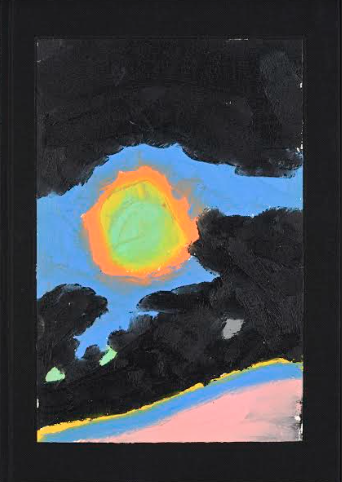Ask the Experts: Meet Bibi and Conner, Our artnet Specialists Here to Answer Your Most Pressing Art-Related Questions


Artnet Auctions

Spent a restless night considering a career in the arts? Racked your brain (and your bank receipts) wondering if you could ever afford a Picasso? Ashamed to admit you don’t know your Art Nouveau from your Art Deco?
We’re here to help. In “Ask the Experts,” our new recurring column, Bibi Naz Zavieh and Conner Williams, two super knowledgeable artnet Auctions specialists, will be answering questions submitted by you, the readers!
If you’ve got any art-related questions, send them to us at [email protected].

Harold Ancart, Soft Places, 2015. Estimate: $10,000—15,000.
Live for bidding from October 4th in Contemporary Art: The Premier Sale
I recently went to the Picasso museum in Malaga, which was amazing, and made me wonder: do you see an interest in Picasso in the young collectors market?
Bibi: Interestingly just a few days ago, a friend, a young physician in his early thirties, asked me about a $5,000 Picasso he saw online. He thought the price was suspicious and, lacking much art-world expertise, he asked if it would be possible to buy an original Picasso at this price point. As it turns out, yes! An original drawing with pencil or ink can be found for less than $10,000; it might be a sketch by the artist, or a very minimal drawing, but an original nevertheless. Conner, I bet you can find really good multiples by Picasso, too?
Conner: Picasso was in fact a very prolific artist in print. Limited editioned prints and ceramics by Picasso can be acquired for as little as $3,000. The affordability of these works at often modest prices have allowed young and emerging collectors to acquire works by an artist who may be much more familiar to them.
Bibi: It’s fascinating to see that while much attention is given to edgy, cool contemporary art, art from the first half of the 20th century (including works by Picasso) remains so successful among collectors around the world. There are collectors of all ages who prefer a more ‘classical’ style of art. And in fact, it often appears to them as a safer buy, for a better value.
Which artists do you have your eyes on this season?
Bibi: Picking one is really difficult as there is so much happening in the art world, all the time. Some obvious choices might be Julie Curtiss or Nicolas Party who have recently achieved record prices at auction that soared way above the pre-sale estimates. Many collectors have their eyes on them with a real buzz in the market for their work.
Another younger artist I’ve had my eye on is Vivian Greven, who had a great show at Lyles & King in New York over the summer and is now also part of a group show on young painters at the Kunsmuseum in Bonn, Germany. Her works are really captivating: they are both classical in their aesthetic and fundamentally contemporary. Her paintings are focused on the human body and the human touch in particular. I find something inherently very appealing about her work—very peaceful, delicate, romantic and at the same time, really funky.
Other artists to keep an eye on this season are some Belgian artists—Marie Rosen, Harold Ancart (obviously!), Thierry Grootaers—to name a few! Yes, being partly Belgian, I must be biased!
With back to school season upon us, what advice do you have for students looking to pursue a career in the art world?
Conner: Being curious and passionate are two wonderful traits to have for any student and they’re particularly useful in the art world. You might take a class that leads you down a path of a certain subject or area of study or an internship that really gives you insight into what it’s like to work at a museum, gallery or non-for-profit arts organization. The more opportunities you open yourself to the more likely you are to realizing if the art world is something you want to pursue and which track within really appeals to you.
And then again, professional experiences—from working at artist’s studios to working at auction houses—can give good insights into what a potential career might look like. It took me several stints and positions as a museum educator (New Museum; Morgan Library & Museum; Cooper Hewitt, Smithsonian Design Museum), adjunct professor (Parsons School of Design) and finally at an auction house (Sotheby’s; Christie’s) to realize what I really enjoyed and wished to pursue.
Bibi: Yes, it’s all about training your eye in this world. I worked at galleries and a private museum in Paris (Galerie Maeght; Galerie Yvon Lambert; Espace Claude Berri) and was really close to the art and the artists. From there, I went on to work at Christie’s for almost 8 years—Christie’s was by far the best “school”! I saw so much art, met so many collectors, dealers, etc. And then I was curious about the online world, so artnet seemed like a natural shift! It’s exciting to be a part of all this.
What are some of the most surprising trends you have seen in the art world?
Bibi: Historically, there have been some interesting movements in the art world. I mean, Eat Art? Daniel Spoerri made art that was basically left-over food, stuck on a table that was then hung on a wall. I think it’s hard to get anymore surprising than that… But then again, you also have the once-in-a-while bronze sock at a gallery booth!
Bibi Naz Zavieh is a Senior Specialist & Co-Head of Contemporary Art & Middle Eastern Art.
Conner Williams is Head of Prints & Multiples.